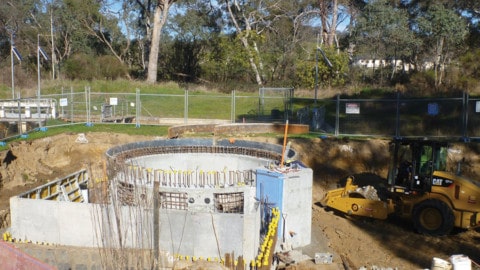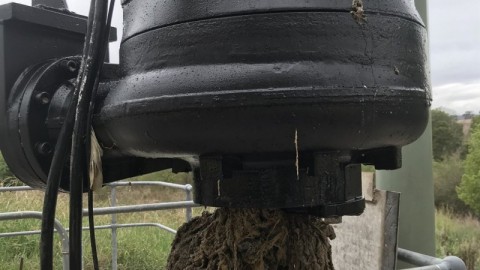by Larry Bachus, The Pump Guy
Larry Bachus has had a revelation when it comes to the maintenance of pumps. Here, he shares his thoughts on getting the most out of your installed pumps.
In our everyday lives, we use many pumps that give good service with practically no maintenance. The standard automobile has seven or eight pumps that often operate for 18-20 years with zero or minimal maintenance.
Your car’s radiator water pump is a variable speed, centrifugal pump with a mechanical seal and shaft bearings. When did you last need to change the bearings on this radiator water pump? When did you last replace the mechanical seal on this pump?
A rotary air conditioning compressor is a pump adapted to handle air or gas. When did you last change the mechanical seal on the AC compressor in your house or car? The shaft seal on your AC compressor runs for many years without leaks. Wouldn’t it be nice if it were that way in industry?
Too many industrial pumps go through mechanical seals and bearings like a newborn baby goes through nappies. Maintenance and reliability engineers constantly struggle with their pump seals and bearings. So, what’s the problem with process pumps?
It turns out that the pumps in your home and car are all perfectly mated into their pipe systems. The energy designed to go into the pump meets the energy requirements of the pipe system.
Too many industrial pumps are poorly mated to their systems. The energies don’t match. That’s the problem with industrial pumps.
An industrial pump’s system is composed of tanks, collecting headers, pipes, elbows, filters, valves and other process devices – probes, heat exchangers and restrictor plates, among others.
Transporting a liquid through a pipe system requires energy. The pump has to meet or overcome this energy.
This energy consists of up to four elements:
1. The elevation differential
2. The pressure differential
3. The velocity energy
4. The friction energy (losses) in the system.
In figures 1 and 2, you’ll notice the single black triangle drawn onto the curves by the design engineer. It indicates that the pump will perform at these precise head and flow coordinates. This means the design engineer considers the system energy to be static and that the pump’s duty coordinates won’t stray.

Figure 1.
I work as a pump consultant. I talk frequently with plant engineers who tell me, “The pumps don’t need gauges because the design engineer says the pump will operate at the head and flow coordinates indicated by the triangle.” And they believe it.
This is a problem because the system is dynamic. Levels constantly change in the tanks and vessels. Pressures change in headers and reactors. Resistance changes with actuating valves and clogging filters in the system. The process pump migrates constantly on its performance curve as the system energies change. Useful energy is converted into vibrations, heat, noise and component distortion as the pump migrates on its curve.
If the design engineer thought the system were dynamic, they would draw more than one triangle onto the pump curve, indicating more than one set of duty coordinates. Right?
The misunderstanding caused by that single triangle confounds the reliability engineer and stalls the MTBF statistics on rotating equipment. That triangle gives the vibration technicians something to ‘trend’.

Figure 2.
A revelation
Let me offer a revelation never before expressed in any technical book or pump magazine. Remember where you read it first.
“The variable system energies are the continuing, undetermined vibrations viewed every day on the vibration technician’s accelerometer.”
I will explain.
Certain vibration readings are normal and expected when the vibration probe touches running equipment. For example, a 4-pole electric motor on 50Hz electricity will produce a vibration signature at 25Hz (1,500rpm) and at 100Hz (motor hum) with harmonics. The vibration technician expects to see this when the electric motor is running.
Other vibration readings are not normal and require correction. A pump suffering cavitation will show recognisable vibrations between 3,000 and 5,000Hz as the vapour bubbles collapse. A running centrifugal pump with a bent shaft will produce a vibration bump with every rpm on the vibration meter. Vibration technicians receive training to interpret other anomalies like imbalance, structural resonances and harmonics.
If the vibrations indicate misalignment between the pump shaft and the motor shaft, the engineer can order the pump to be stopped at some convenient time and go through an alignment procedure without disassembling the pump. Once aligned, the vibrations from misalignment will reduce.
Maybe the vibrations indicate the pump is suffering cavitation. Most cavitation can be corrected without stopping the pump. To reduce or eliminate most cavitation, the operator or engineer must either:
(a) Increase the energy going into the pump, or
(b) Adjust the pump’s duty coordinates by increasing or relaxing the resistance across a control valve or other device.
Either of these two procedures will calm most cavitation and mean the pump doesn’t need to go to the shop. The vibrations attributed to cavitation will disappear.
Maybe the vibrations indicate the pump shaft is bent. The pump goes to the shop. The repaired pump returns to service with a straight shaft. The associated vibrations go away.
Notice what I’m saying? As the maintenance obstacles to reliable pumps are resolved, the offending vibrations dissipate.
A short-term procedure
Viewed with this understanding, vibration analysis should be a second tier, short-term procedure. Think of your car.
If you notice that the front tyre vibrates on the highway, you take the car to a tyre shop. The technician balances the tyre and the vibrations go away. Does anyone reading this article ‘trend’ the vibrations daily on the tyres of the family car?
A dirty fuel filter makes your car’s engine jerk, spit and sputter as you accelerate onto the highway. The technician installs a new fuel filter and the vibrations go away. Who tracks and trends the daily engine vibrations on the car?
If the steering wheel pulls to the left or right, the front end is out of alignment. Maybe, a front tyre has the wrong pressure. You correct this. The problem goes away. There is no need to ‘trend’ your car’s front-end alignment.
So then, why is industrial ‘vibration analysis’ and ‘vibration trending’ an ongoing, never-ending procedure? What are the mysterious, continuous, undetermined, recurring vibrations plaguing industrial process pumps?
The answer is simple. These mysterious vibrations that require constant tracking and trending are the fluctuating pipe system energies. (Go back to the revelation.) These energies drag the pump away from its design duty coordinates into zones of vibration, heat, noise and component distortion.
The vibration meter reveals incipient cavitation in a process pump. The reliability engineer thinks cavitation is the problem. Cavitation isn’t the problem. Cavitation is the symptom of the real problem – variable system energies.
The vibration meter reads the high vibrations in the pump bearings. The reliability engineer orders to rebuild the pump and change the bearings. If the bearings were the problem, the problem would go away with the next set of bearings and there would be nothing to trend. If trending continues, the bearings aren’t the problem but the symptom of the real problem.
Variable system energies drag the pump into zones of shaft deflection that overload precision bearings. The bearings fail prematurely. The next set of bearings will fail prematurely too.
Premature bearing failure is problem number two. Variable system resistance is problem number one. My old boss used to say, “Son, solve problem number one and problem number two will go away!”
You scratch your arm. You apply a bandage. The wound heals. The bandage comes off. There is no reason to wear the bandage for 30 years.
Likewise, a pump suffers a problem with attendant vibrations. The problem is resolved. The vibrations calm down. There is no reason to chase errant vibrations for 30 years.
Aviation industry accountants understand that a passenger jet on the ground doesn’t earn revenue for the airline company. Likewise, a disassembled pump on a table in the maintenance shop doesn’t produce revenue. A pump only produces revenue when it is in service. Downtime is unproductive, and should be prevented or eliminated.
If I can eliminate today a maintenance issue with a pump that might occur next month, then my pump is reliable for the next two months. If I can prevent a maintenance issue that will occur next year, then my pump is reliable for the next two years (this year and next year).
In essence, ‘reliability’ is the prevention and elimination of future maintenance incidents. And, prevention and elimination of future pump maintenance incidents is the true definition of pump reliability.
Preventive maintenance and reliability are conjoined twins. But sadly, I visit many process plants where the reliability engineer has no background in preventive maintenance, or even breakdown maintenance. How can this recently-graduated engineer contribute to pump reliability? Therefore, the engineer decides that the real mission is to monitor vibrations. And thus, vibration analysis becomes the reason the reliability team exists.
Look everyone, when a newborn baby cries, it is telling the parents precisely what the baby wants or needs. The baby says, “Pick me up,” “Put me down,” “I’m cold,” “I’m hot,” “Feed me,” or “Change my nappy.” But, most new parents don’t initially know how to interpret the baby’s crying. Parents must learn the basics before taking the baby to a doctor to determine the problem.
It’s the same with pumps. Learn the basics first. The vibration analyser is a tool to obtain reliability. So is the pump performance curve. So is the system curve. The thermographic camera is a tool to obtain reliability. Pressure gauges and a flow meter are other reliability tools. The curves and the gauges don’t cost so much.
Once pump basics are mastered and the pumps are operating for numerous years without problems, the high-tech devices can extend your pump life even further.
In other words, if you can’t find your balance to ride a bicycle, don’t try to ride a motorcycle. If you don’t master the basics, the motorcycle will only show you the way to the hospital emergency room.
About the author
The Pump Guy is Larry Bachus, a pump consultant, author and inventor based in Nashville, Tennessee. Larry is a retired member of ASME and lectures in both English and Spanish. Larry can be contacted at [email protected].

















